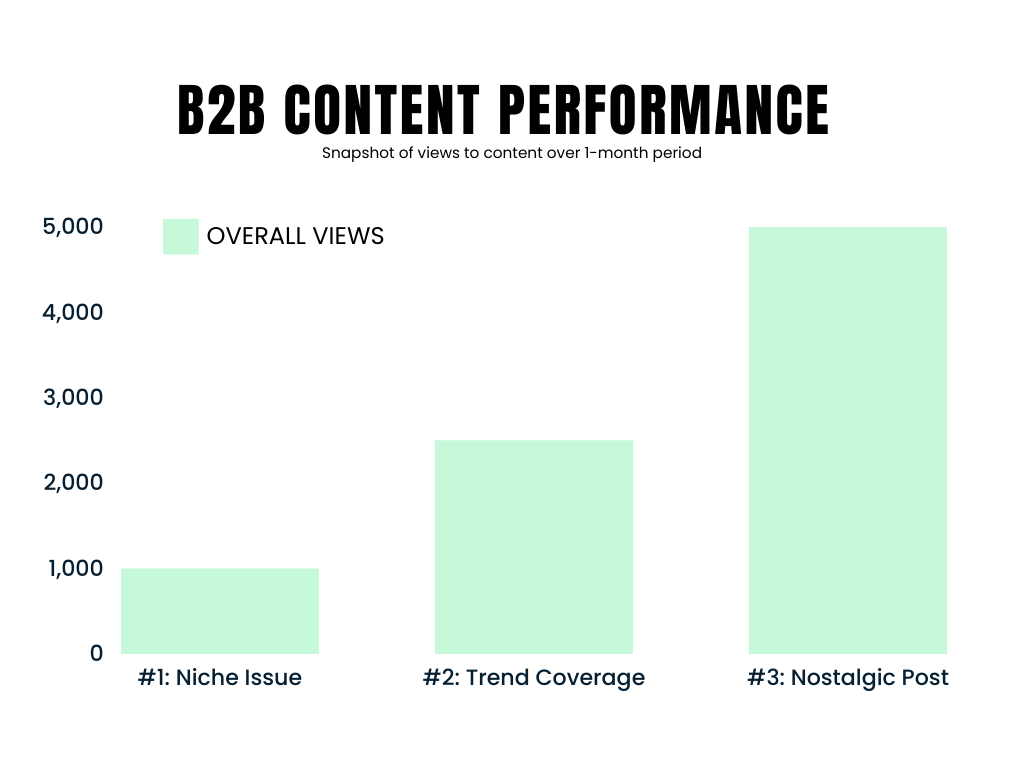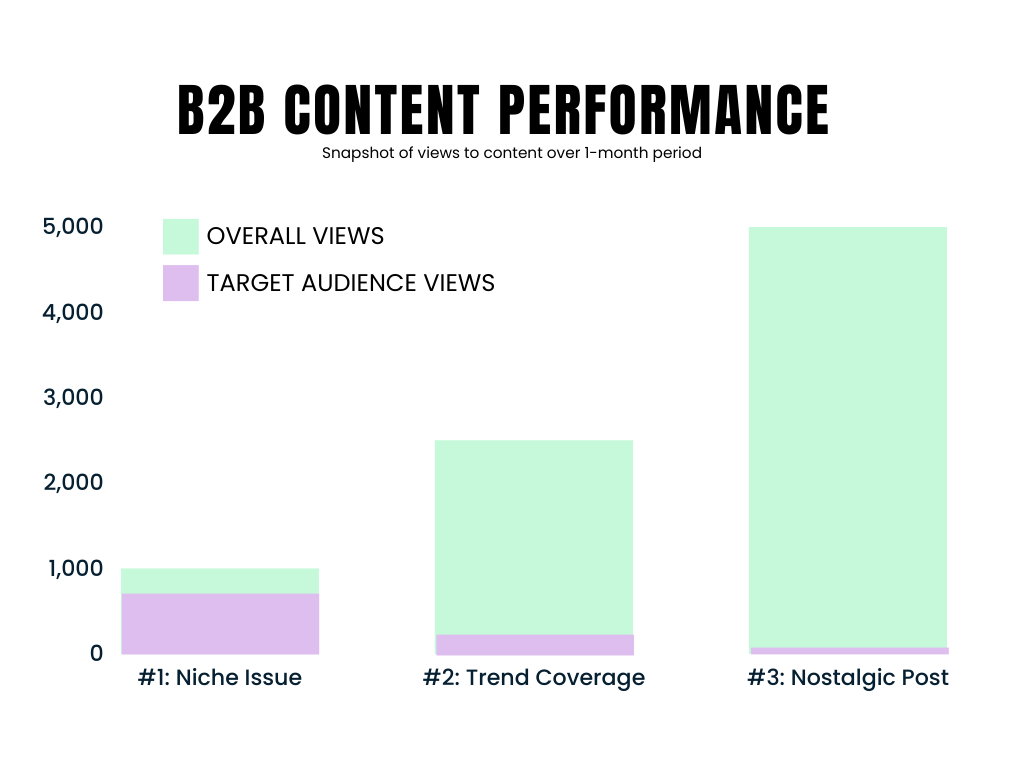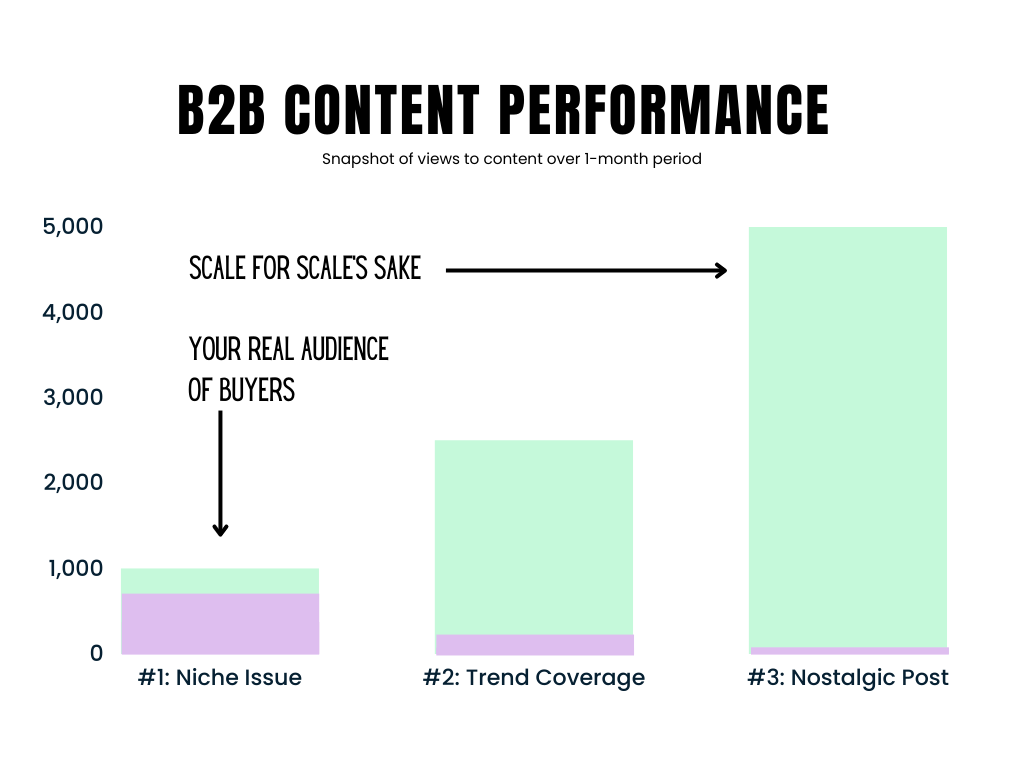Why views aren’t everything: The danger of scale metrics in B2B content marketing
How an obsessive quest for views can actually lead your team down the wrong pathI’ll admit it: Getting a lot of views to content feels really good.
It’s a signal that your strategy is working. It’s a sign that people in your audience want to consume your content and find it really important.
Actually, in B2B content marketing it might not be any of those things. It just feels like it is, and that is dangerous.
Here’s why:
- In B2B, you’re typically looking for a very specific buyer.
- There are always a finite number of those buyers.
- Getting five of those buyers to consume a piece of your content is better than 500,000 people who will never buy it.
It’s hard to get those buyers to pay attention.
- They’re in demand, with lots of companies like yours competing for their attention.
- They’re discerning about what they consume.
- They reserve their attention for the highest value content that matters to them
Now, imagine you create 3 pieces of content.

- Piece #1, about a niche buying issue in the space, gets 1,000 views.
- Piece #2, about a trend in your space, gets 2,500 views.
- Piece #3, a nostalgic post about how business in your space used to be done, gets 5,000 views.
Here’s where the most danger is. Your team, seeing the results (“5x performance growth on piece #3!”), goes to the most logical next steps based on being trained on scale metrics, not having the data to understand who the views are coming from, and wanting badly to succeed:
They decide to dial up the nostalgic content, which none of your buyers today care about, and doesn’t add value to the buyer’s decision process.
As it turns out, piece #1 was actually consumed by the most target buyers. And piece #3 was consumed by the least.

This is an extreme example, but it underscores the issue of relying only on scale metrics to determine the success of your content.

So, how do you build an organization that doesn’t fall into this trap? Ideally, you would have more sophisticated systems of measuring quality of audience. But if you don’t, here are four relatively easy safeguards you should employ anyway:
- Create conversion assets and pathways and promote them on every piece (make sure the assets are content oriented specifically to your target audience, and not sales asks). Alongside views reporting, measure conversion rate on individual pages to determine quality of audience and celebrate those metrics with your team. This will round out your performance metrics and prompt a more thoughtful content refinement process.
- Don’t only rely only on your own views information as a proxy for what your audience cares about. Build a system of generating data from your target audience in all the areas that hang out online and off. Watch closely the topics that animate them, listen to their questions, and internalize their pain points.
- Have a strong content strategy in place that originally included an audience study, and don’t deviate from that strategy.
- Stay close with the sales team, and ask them about what content they’re using to get meetings and secure deals. Ask them if clients bring up content in sales meetings. Let the sales team contribute by sharing client feedback and pain points. Make sure everyone on your content team respects and has a relationship with the sales team.
While earning audience attention is a prerequisite to earning a prospect’s trust and their business, not all audience attention is created equal. Look beyond pageviews to get the best sense of what is resonating – and where your content focus should go from there.
Subscribe
Get our weekly newsletter for tips on how to drive better content marketing performance.
For a regular stream of ideas, research and links we find helpful. And of course, to say hi!
